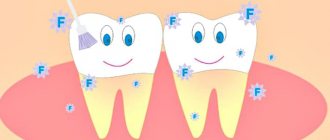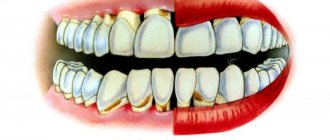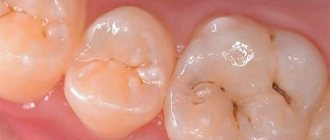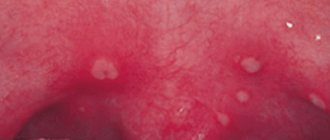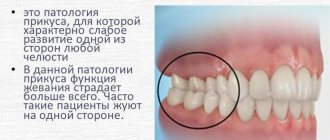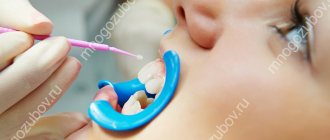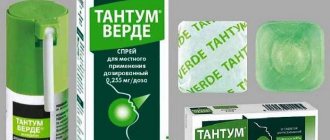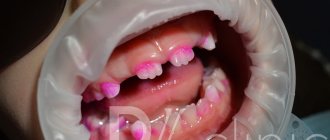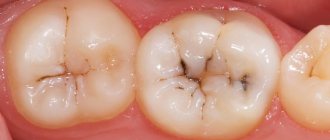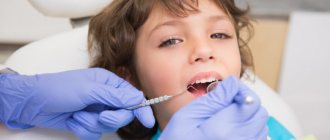There is debate about the benefits and harms of fluoridation. Some dentists present this procedure almost as a panacea for caries, while others claim that it further harms weakened enamel.
It is officially believed that fluoridation helps prevent caries and keep teeth healthy. This service is offered in every clinic to adults and children, sometimes even forced. Let's figure it out together: how the preventive effect is achieved, how the manipulation is carried out and whether it can be done at home yourself. We will also find out whether it makes sense to perform the procedure or is it just another way of pumping out money.
What is dental fluoridation?
Fluoride is one of the most important elements for teeth. It strengthens the enamel, making it resistant to acids and bacteria. Patients with its deficiency more often develop caries and pulpitis.
Normally, fluoride enters the body naturally - along with water (about 80% of total consumption) and food. But it is not always enough. In addition, certain pathological factors (systemic diseases, poor digestibility, pregnancy, etc.) contribute to its rapid consumption.
In such cases, fluoridation is recommended. This procedure involves saturating the teeth with fluoride-containing preparations. They are applied (impregnated) to the enamel using brushes or special trays, after which the compositions harden and form a protective film.
Fluoride strengthens enamel, making it resistant to bacteria and acids
Mechanism of action
Enamel fluoridation products contain various fluoride compounds in high concentrations. This is usually one of three elements:
- sodium fluoride – NaF;
- amino fluoride – AmF;
- phosphate fluoride – APF.
When exposed to moisture and heat, fluoride compounds release fluoride ions, which bind to the main building element of the dental shell - hydroxyapatite. This is a calcium compound that makes up 75% of enamel.
As a result, a new element is formed - hydroxyfluorapatite or fluorohydroxyapatite. It is many times stronger and more resistant to acids than hydroxyapatite. Consequently, the enamel also becomes stronger. This mechanism of action is the preventive effect of fluoridation.
The procedure has another useful property. After applying fluorine-containing compounds, they form a layer of calcium fluoride on the surface of the crowns. It protects the enamel from the action of acids, and when the pH drops below 5.5, it decomposes, releasing calcium and fluoride ions, and saturates the dental tissues with them.
Thus, fluoride impregnation not only strengthens teeth, but also minimizes the harmful effects of lactic acid produced by cariogenic bacteria.
Enamel fluoridation products contain various fluoride compounds in high concentrations
Fluoridation methods
There are several methods for fluoridating baby teeth. Let's look at them.
- Classic. This is the easiest way. The pre-dried enamel surface is coated with a special remineralizing composition, which is then irradiated with a special UV lamp. However, this method does not provide a long-term effect, since under the influence of saliva the remineralizing drug is quickly washed away.
- Deep. This method is more effective because the composition penetrates into the deep layers of dental tissue, resulting in the resulting effect lasting much longer.
- Express method. This method involves the use of special disposable dental trays. The dentist fills the trays with a remineralizing agent and places them on the child's teeth. Keep the composition for 7–10 minutes. In order to saturate the enamel with the necessary elements, you will need to carry out approximately ten procedures. This method is suitable for restless children who cannot sit for a long time with mouth guards.
- Kapovy. Individual dental guards are made for the child, taking into account the structural features of his jaws. These trays, together with the remineralizing composition, are used at home. However, this method is only suitable for older children.
- Electrophoresis. The dentist applies the composition to the teeth and then acts on it with electrical waves, resulting in the release of fluoride ions and their penetration into the dental tissue. This method gives a good effect, but it is not suitable for everyone.
The dentist takes impressions of the child’s dentition, and the dental technician makes individual elastic mouthguards - soft molds that are filled with a fluoride-containing preparation and placed on the teeth.
Each of these methods has its pros and cons, but most patients prefer deep fluoridation. It is equally suitable for both baby and permanent teeth. The procedure increases the strength of dental tissue by 10 times. Deep fluoridation can be performed on children starting from the age of two. It is recommended to repeat the procedure 1 to 4 times a year. How often fluoridation should be done is determined by the doctor.
When should fluoridation be done, indications?
As a preventative measure, fluoridation is recommended for all patients of any age, especially children and adolescents. The process of tooth formation has not yet been completed and the degree of mineralization is lower - accordingly, the risk of developing caries is higher.
But the manipulation will be especially useful:
- with dental hyperesthesia - increased sensitivity to cold, hot, sour, sweet;
- the presence of caries at the chalky heel stage;
- before or after installing braces - to prevent demineralization of the enamel;
- if the patient is predisposed to caries;
- after whitening and professional teeth cleaning;
- in the presence of non-carious pathologies: microcracks, wedge-shaped defects, thinning of enamel;
- when the patient is diagnosed with acute fluoride deficiency;
- during the period of change of milk teeth to molars;
- with increased viscosity of saliva or insufficient secretion - in this case, the protective properties of the secretion are reduced.
Some dentists additionally recommend coating newly treated crowns: in their opinion, this will extend the life of the fillings.
Only treated teeth can be coated with fluoride.
Dentistry for pregnant women
The pregnancy period is a serious test for a woman, since at this time part of the body’s reserves are transferred to the fetus, so calcium deficiency often occurs, which cannot but affect the condition of the expectant mother’s teeth. In addition, already at 6-10 weeks, the rudiments of all your baby’s milk teeth are formed, and the health of his teeth largely depends on the health of his mother. In this regard, during pregnancy it is very important to carefully monitor oral hygiene and regularly visit the dentist.
Contraindications to the procedure
Despite its benefits, fluoridation can be harmful if not done correctly. The procedure is not performed if the patient:
- allergy to the components of the fluoridating composition;
- fluorosis – an excess of fluoride in the body;
- diabetes mellitus - fluoride compounds interfere with the process of sugar absorption, which is already impaired in diabetics.
Also, fluoride impregnation is useless if caries has moved from the chalk spot stage to another phase: a dark spot, affecting enamel or dentin. In this case, full treatment is carried out.
Other factors are also taken into account. Thus, children do not always allow the manipulation to be performed: some are so afraid of doctors that it is impossible to persuade them to sit quietly in a chair for even 10 minutes. Therefore, special quick-drying solutions are used for children. But it’s not always possible to apply them either.
Place of residence is also important. In some regions, the soil is excessively saturated with fluoride; it already enters the body in excess along with water and food. The procedure is prohibited for residents of such areas.
Fluorosis is one of the contraindications to fluoridation
What are the advantages and disadvantages?
Fluoridation is a controversial procedure. It has both positive and negative sides.
Among the advantages are:
- reduction in the development of caries with regular treatment every 3-6 months: by 30% when using preparations with 1% sodium fluoride and by 63% when using 5% solutions (according to the medical information portal 24stoma - https://24stoma.ru/fluorirovanie- zubov.html);
- strengthening enamel;
- minimizing the manifestations of hyperesthesia;
- preventing the leaching of calcium from dental tissues;
- protection against staining with pigments;
- cure caries at the chalk spot stage;
- duration of effect: complete leaching of elements with simple fluoridation occurs after 6 months, with deep fluoridation - after 2 years;
- prevention of secondary caries after installation of fillings;
- slight whitening effect - impregnation with fluoride-containing preparations somewhat lightens the enamel, which makes the smile more attractive.
But there are also significant disadvantages that must be taken into account before agreeing to fluoridation. These are 2 main nuances:
- Risk of developing fluorosis. This disease is characterized by excessive accumulation of fluoride in the body, which leads to fragility of hard tissues. Moreover, not only teeth suffer, but all structures: bones also become more brittle, and fractures often occur.
- Fluoride toxicity. When there is an excess of these substances, they disrupt the functioning of the body, aggravate endocrine diseases (including diabetes), lead to anemia and diseases of the nervous system.
Fluoridation reduces the risk of tooth decay with regular treatment every 3-6 months
The effect of fluoride on human teeth
In 1990, students at the University of California conducted a social experiment. They spread alarming information that the water was contaminated with dihydrogen monooxide. Their statement had the effect of a “bomb exploding” among the public.
In fact, dihydrogen monoxide is one of the chemical names of ordinary water (formula H₂O). A humorous, but very clear experience showed how gullible people ignorant of science can be, and how the lack of basic knowledge leads to increased panic. The experiment gave birth to the term “Zonerism,” when facts are used to draw false conclusions. It is used by toothpaste manufacturers.
Ardent opponents argue that in nature fluorine in its pure form is a poisonous gas. But it is introduced into oral hygiene products in the form of fluoride compounds, which have completely different properties.
It is worth agreeing that fluoride in large quantities is really harmful. But to paraphrase the words of Paracelsus, we can safely say that “all medicine and all poison, the difference is only in quantity.” And in order to “accumulate” an element in a dangerous concentration, it must be swallowed. It’s unlikely that anyone does this with toothpaste.
That is why, before making a conclusion about the benefits and harms of toothpaste containing fluoride, it is necessary to find out why fluoride is actually good or bad.
Beneficial fluoride
The positive effect of fluoride on teeth was discovered more than 100 years ago, and already in 1914, Americans began producing fluoridated toothpastes. The anti-carious effect of the element has been proven by numerous studies. Its beneficial effect is expressed in increasing the resistance of enamel to destruction from waste products of microorganisms living in the oral cavity by 35–40%. Fluorine in various compounds is still used in toothpastes, and isn’t this an indicator that it is necessary for dental health.
The main quality of fluoride, due to which it is needed and used in toothpaste, is its anti-caries ability. It is characterized by the following features:
- Strengthening enamel. Fluorine, dissolved in various salts, when reacting with saliva, releases free ions. Which, in turn, react with calcium compounds. When they bind, they turn into the element fluorapatite, which is durable and resistant to microorganisms. It is he who is engaged in “patching” damaged areas of enamel. The process is called remineralization. Pastes with fluoride are better than others in inhibiting the rate of caries development.
- Bactericidal action. Fluoride, being a natural antiseptic, has an antibacterial effect on all types of cariogenic microorganisms in the oral cavity.
- Fighting dental plaque. After using fluoride toothpastes, food debris does not stick to the walls of the teeth, and therefore stones do not form.
- Strengthening the remineralization ability of saliva. Active salivation is very important for saturating the enamel with calcium and fluoride minerals. Pastes increase the working activity of the salivary glands, thereby compensating for the demineralization process.
- Participation in metabolic processes. Taking fluoride in microdoses is useful for improving metabolism. This phenomenon is important for women during pregnancy, as it contributes to the full formation of the fetus.
Despite the fact that the element has a large number of positive qualities, it is worth noting its disadvantages.
Harmful fluoride
In large quantities, fluoride can be not only harmful, but also hazardous to health. It is distinguished by its insidious quality of accumulating in the body, but it is almost impossible to remove it. In case of oversaturation, it will spread its toxicity to the body and poison it.
The element affects the appearance of joint mobility and the appearance of bone fragility. A complete list of the dangers of fluoride, including in toothpaste, for an adult, looks like this:
- Hormonal imbalance. Fluoride ions can accumulate in the thyroid gland over time, affecting hormone production. Specifically, the synthesis of thyroid hormones and totestosterone changes, which is fraught with the development of diseases of the reproductive system in girls and the reproductive system in boys.
Fluorosis
Fluoride ions in large quantities provoke the development of a carcinogenic reaction, which increases the risk of developing cancer.- Fluorosis develops. The problem is a dental one, but it begins during intrauterine development if fluoride is present in the diet of the expectant mother with a “plus” sign. The disease progresses in different ways. In the first form, the enamel becomes spotted; over time, the spots turn from yellowish to brown - the enamel is completely destroyed. In the second case, the bone tissue of the skeleton becomes brittle, which increases the risk of fractures and slows down the recovery process.
- There is a neurotoxic effect on the children's body, so the use of fluoride-containing toothpastes at this age should be limited. Children “poisoned” by an excess of fluoride are united by the following differences: problems with speech development and memory.
Fluoride in toothpaste can be harmful, even if it contains minimal amounts. It can simply become the “last straw” if there is an excess of the element in the body, and then a negative impact on all life support systems cannot be avoided.
Harm from the procedure
You may come across the opinion that fluoridation is harmful and even dangerous. Proponents of this theory point to 2 negative points:
- In order for fluorohydroxyapatite to be produced, fluoride must bind to the main building element of teeth - calcium. As a result, the compositions “pull out” the element from the enamel and dentin, and do not strengthen, but, on the contrary, make the crowns more fragile.
- Chance of fluorosis, which causes brittle bones. When using drugs, patients partially swallow them, which leads to an overdose of the element.
These statements are true, but with reservations. For normal teeth, the formation of hydroxyfluorapatite is not dangerous. But if they are significantly lacking in calcium, then the procedure will cause even more harm.
The picture is approximately the same with fluorosis. If you live in a region with normal or insufficient levels of fluoride in soil and water, manipulation is harmless and even beneficial. But with its excess, the risk of pathology is high.
Therefore, ideally, impregnation is carried out after testing and determining the level of fluoride in the blood. However, in practice, dentists recommend the service left and right, and even insist on it. Don't give in to their persuasion. It is precisely this kind of thoughtless imposition that is dangerous. There are certain indications for the procedure, and it is at best impractical to carry out it without clinical results.
As for the supposed spike in fluoride levels after the drugs are applied, these statements are false. According to studies published in the International Journal of Pediatric Dentistry and the Official Journal of the American Academy of Pediatrics, after the use of fluoride gels in children, the level of the element in the urine remained within normal limits. You can view the relevant publications using the following links: https://www.ncbi.nlm.nih.gov/pubmed/28105705, https://www.ncbi.nlm.nih.gov/pmc/articles/PMC4143996/.
For several months after the procedure, buy fluoride-free toothpastes to avoid overdose
However, keep in mind that in most cases the natural intake of fluoride through water and food is sufficient. And as a preventive measure, fluoride-containing toothpastes will suffice. For children under 12 years of age, the level of fluoride compounds should be in the range of 500-1,000 ppm, for adolescents and adults - from 1,500 ppm (for daily products) to 2,500-5,000 ppm (for preventive and therapeutic gels).
If you decide to undergo fluoridation, it is advisable to buy toothpastes without fluoride for a couple of months after the procedure to prevent an overdose.
Recommendations after professional teeth cleaning
There are many reasons for the deposition of hard plaque, including:
- poor teeth cleaning at home;
- incorrectly selected brush and paste of inadequate quality;
- smoking;
- a large amount of soft food in the diet that does not require thorough chewing;
- dysfunction of the thyroid gland;
- uneven teeth and chewing food on only one side of the jaw.
Removing tartar is much more difficult, and it brings much more problems. In order to avoid possible complications in the future, professional teeth cleaning in dental offices by hygienists will help.
Professional teeth cleaning is a procedure for mechanical or ultrasonic removal of tartar, plaque and pigmentation from the surfaces of teeth, as well as from hard-to-reach areas of the oral cavity. Hygienic cleaning must be done by everyone, without exception, at least 2 times a year.
Mechanical method of removing tartar
But this procedure is especially useful and vital for owners of orthodontic structures in the oral cavity, such as implants, braces, and veneers. For those who wear braces, this procedure is very relevant. Since it is not possible to carry out high-quality teeth cleaning at home.
Professional cleaning is also carried out for those who decide to undergo dental treatment or enamel whitening.
The hygienic cleaning procedure may cause increased sensitivity to cold and hot, and short-term discomfort during cleaning. This is an acceptable side effect. After ultrasonic teeth cleaning, the doctor gives individual recommendations for further actions for 2-3 days.
This plan includes, but is not limited to, customized oral care products. But the general direction of the appointments is as follows:
- purchasing a new toothbrush;
- do not forget to brush your teeth 2 times a day using a paste that reduces enamel sensitivity.
You can start eating almost immediately after professional cleaning. But doctors still advise waiting at least 1 hour.
If fluoridation of the dental surface has been carried out, then it is necessary to abstain from food for at least 2 hours.
Anything that does not contain food or natural dyes is allowed to be used in food. Dentists especially recommend eating more solid foods - fruits and vegetables, such as apples, as they reduce the risk of plaque forming on the surface of the teeth.
Dairy products are rich in calcium
It is recommended to increase the amount of calcium-rich foods in your diet - milk, cottage cheese, kefir. But after using soft food, it is imperative to brush your teeth, rinse your mouth and use dental floss, since such food will actively clog into hard-to-reach places.
Also, to maintain the effect of brushing your teeth in the first days, it is recommended to drink mainly water, very lightly brewed tea or apple juice, but diluted with water.
In the first 2-3 days after the hygiene procedure, you should completely exclude from your diet foods that irritate your teeth - everything sour, salty, sweet, cold, hot, carbonated drinks, as well as foods containing dyes:
- black and brown dyes are found in tea, coffee, Coca-Cola, Pepsi, cocoa, chocolate, soy sauce and balsamic vinegar, as well as in some berries (blueberries, blackberries, blueberries, black currants and black grapes);
- yellow dye is inherent in spices - mustard and curry;
- red and orange colors - red wine, ketchup, all red berries, tomatoes and their juice, beets, carrots, pumpkin and red cabbage;
- as well as all products with non-natural dyes - any carbonated drinks, candies, ice cream.
If it is not possible to give up your coffee addiction, then you can start drinking it after a few hours, but you should dilute it generously with milk and drink it through a straw.
Products that stain tooth enamel
Strong teeth are the key to the health of not only the oral cavity, but the entire body as a whole. For a beautiful and healthy smile, you need to brush your teeth twice a day, or better yet, after every meal. But no matter how often you brush, not all surfaces and corners of the oral cavity are accessible to a regular toothbrush. And then the plaque that went “undetected” turns into tartar. Professional teeth cleaning from tartar
The hygienic cleaning procedure may cause increased sensitivity to cold and hot, and short-term discomfort during cleaning. This is an acceptable side effect. After ultrasonic teeth cleaning, the doctor gives individual recommendations for further actions for 2-3 days.
- black and brown dyes are found in tea, coffee, Coca-Cola, Pepsi, cocoa, chocolate, soy sauce and balsamic vinegar, as well as in some berries (blueberries,
- blackberries, blueberries, black currants and black grapes);
- yellow dye is inherent in spices - mustard and curry;
- red and orange colors - red wine, ketchup, all red berries, tomatoes and their juice, beets, carrots, pumpkin and red cabbage;
- as well as all products with non-natural dyes - any carbonated drinks, candies, ice cream.
Taking care of your oral cavity is an integral part of our lives. Neglect of hygiene standards can lead to serious illnesses. It is recommended to visit the dentist's office twice a year to maintain health. Unfortunately, even daily brushing of teeth does not guarantee 100% protection. Often, the toothbrush does not always reach hard-to-reach places, and over time, plaque forms there, which develops into stone.
This solid formation is quite dark, as it contains food debris, bacteria, various salts and dead cells. More often, tartar forms at the base of the tooth on the inside, where the brush cannot reach and a person cannot always see it. There are many reasons for the occurrence of hard plaque.
- Most often, tartar is formed as a result of improper brushing of teeth and poor quality toothpaste.
- The stone forms when mostly soft foods are consumed or a person chews food frequently on one side of the jaw.
- Unfortunately, dark plaque is a constant companion of smokers.
What to do to combat this problem? Professional cleaning at the dentist’s office will help remove contamination. But after such a procedure, special rules should be followed so that the effect lasts as long as possible.
Dentists always give recommendations regarding oral care. After brushing your teeth, what should you not do? The main prohibitions are related to food; you should also replace your toothbrush with a new one with softer bristles, so as not to injure the already damaged enamel. But there are special instructions that must be strictly followed.
After professional teeth cleaning you should not:
- Consume food and liquids with coloring substances – yellow, red and brown. The list includes lemonades, juices, chocolate, berries (blueberries, blackberries, currants). You should not drink red wine, tomato juice, carrots and beets. Tooth enamel becomes thin and sensitive after brushing. Avoid these foods for a few days.
- Quit smoking for at least a day. In the first two days, tooth enamel is restored after brushing and can easily return to its yellow tint.
If you follow the rules, the effect of brushing your teeth will last for a long time. Let's take a closer look at what foods should be consumed in the first days after the procedure.
Ultrasonic cleaning is the most effective way to remove stone, but has a number of possible complications.
- Inflammation of the gums. In this case, the doctor prescribes medications to relieve inflammation, possibly even antibiotics. It all depends on dental diseases that were not cured when brushing teeth. You can rinse your mouth with special rinses based on medicinal herbs.
- Increased sensitivity of teeth. A typical problem after any type of cleaning. The main recommendation is to replace toothpaste and take an additional course of fluoridation of tooth enamel. The teeth are treated with a solution containing a large amount of fluoride. This procedure helps heal microcracks in the enamel. Due to increased sensitivity, avoid cold and hot drinks, and food should also be at medium temperature.
- If pain persists for a long time, you should consult a doctor again.
- Use ointments and gels to relieve inflammation and swelling of the gums.
- Monitor your nutrition and food temperature.
- Choose the right toothbrush and toothpaste.
We suggest you read: Why there is a bitter taste in the mouth after taking tablets.
Dentists do not recommend brushing your teeth of tartar on your own. You can cause even more damage to your tooth enamel and gums. As a result, much more serious diseases will begin to develop.
If you dream of a snow-white Hollywood smile, then going to the dentist for a whitening procedure is what you need. But before that, you should consult a doctor and eliminate other possible oral diseases. After all, we don’t always notice the problem in time. For a long time, teeth and gums may not give cause for concern.
Often, even when we notice hard plaque, we are in no hurry to see a dentist. The stone is dangerous because it gradually destroys the tooth, causing unevenness and chips. Eternal affairs, work or simply fear of the dental office, subsequently leads to a more labor-intensive cleansing process. Do not take your doctor's recommendations lightly after cleansing. You will have to give up many products, including cigarettes and coffee for several days. This will prolong the effect of brushing your teeth much longer.
Teeth whitening is a complex procedure that involves deep cleaning of crowns from coffee and food deposits. It is performed using special gels, preparations and devices. The most well-known and popular technique is laser whitening. Photobleaching, chemical and endobleaching are also used.
Each professional whitening option has its own disadvantages and advantages, but all of them are safer than home methods. During the process of lightening the enamel, it is exposed to aggressive substances; microcracks can form on it, which in the first days after the procedure will absorb various dyes even more. In this regard, there are a number of restrictions regarding permitted products, alcohol, and smoking.
Methods of conducting
Fluoridation of teeth can be done at home or at the dentist. The first option is to independently use pastes, gels and varnishes with a safe fluoride content: it is higher than in daily hygiene products, but cannot cause harm.
But impregnation with fluoride preparations in the clinic is a professional procedure that is performed only by a specialist. It comes in 3 main types:
- simple;
- deep;
- using electrophoresis.
Simple fluoridation
Simple impregnation is the cheapest. But with it, the element does not penetrate deep into the enamel. Therefore, fluoride is washed out faster, and repeated manipulation has to be repeated after 3-6 months.
A simple type of procedure is carried out in two versions:
- Using varnish. They cover the enamel with a brush. In total you will need 3-4 sessions of 2-5 minutes each. There are different types of varnishes. When treating a child’s teeth, they prefer to use quick-drying compounds that harden immediately after application.
- With the use of mouth guards. This method is called fast or express fluoridation, although it is more labor-intensive. First, impressions of the jaws are taken, then individual mouthguards are made from them. The products are filled with fluorine-containing compounds and placed on the jaws for 5-15 minutes, after which the remaining solution is rinsed with water. The full course includes 10-15 sessions, the frequency is once a week. The advantage of the fast method: after making the impression trays, you can do it yourself at home.
Mouthguards are filled with fluoride-containing compounds and placed on the jaws for 5-15 minutes
Simple types of procedures are common and familiar. They are often used in combination after professional cleaning, whitening, removal of braces, composite restoration, etc. Moreover, the manipulations are not always differentiated, but are indicated in the price list under a general name: so the patient may not know that he has had fluoridation.
What is deep fluoridation?
Deep fluoridation is a more labor-intensive, time-consuming and expensive procedure than simple fluoridation. However, it gives better results: fluorides penetrate deep into the enamel and are washed out for a long time. So you need to repeat the manipulation less often: at least once every 1.5-2 years, maximum once every 6 months.
The procedure is carried out in several stages:
- Get professional cleaning done. This is mandatory, because Plaque and tartar prevent the penetration of beneficial substances.
- Dry the surface of the crowns with a stream of warm air.
- First, the enamel is coated with compounds containing fluorine, copper and magnesium. They form a protective film around the teeth. The units are dried using polymerization lamps.
- Then apply a second layer - varnish with calcium hydroxide. It reacts with previous compounds, which promotes the production of fluoride ions. It also seals the resulting protective film and prevents it from being washed off.
- Finally, the patient is asked to rinse his mouth with clean water to wash away excess drugs.
It takes 30-40 minutes to perform deep fluoridation. If the patient has a lot of tartar and pigmented deposits, it will take more time and the procedure may have to be performed in 2 visits.
In the deep type of procedure, compositions are used in which the concentration of fluorides is 5 times higher than in means for simple impregnation. Therefore, it helps to slow down and even completely stop the development of caries not only at the demineralization stage, but also when the disease has entered the dark spot phase within the enamel layer.
Deep fluoridation takes 30-40 minutes
Using electrophoresis
Fluoridation by electrophoresis is not very common. Although the procedure promotes the penetration of beneficial substances not only deep into the enamel, but also partially into the dentin, it is difficult to perform. In addition, it has a number of contraindications and side effects.
For the procedure, a low power current is used: its strength and duration of exposure are selected individually for each patient, depending on the condition of the enamel. First, electrodes with pads soaked in calcium hydroxide are placed on the teeth. A few minutes later, new gaskets are placed, this time with a 2-4% sodium fluoride solution.
The interaction of calcium and sodium strengthens the enamel and promotes the formation of a protective layer on the surface of the crowns.
An electrophoresis session lasts several minutes, with each visit the procedure time is extended. A total of 10 visits will be required.
With the permission of your dentist, you can use a paste containing fluoride at home.
Toothpastes containing fluoride
Fluoride-containing pastes are used to prevent caries. Thanks to this mineral substance, the products strengthen tooth enamel and suppress the activity of pathogenic microorganisms in the oral cavity.
However, they cannot be used on an ongoing basis , since the permissible level of fluoride in the body can be exceeded. Fluorides present in pastes have the ability to accumulate in enamel and bone tissue, which can lead to erosion of the former.
Toothpastes with fluoride:
Paradontax Sensodyne New Pearl
Experts recommend using toothpastes containing herbal extracts - mint, propolis, tea tree. It is better to avoid fluoride-containing toothpastes or use them rarely - once every 1-2 weeks.
Note! Children with baby teeth are prohibited from using fluoride toothpastes!
Watch a video about fluoride toothpastes:
Fluoridation of teeth at home
To save money, you can fluoride your teeth at home. Although a one-time use is inferior in effectiveness to professional procedures, the result with repeated use will be better. In addition, you won’t have to waste time going to the dentist.
Advice: before home procedures, have your teeth cleaned with ultrasound in the clinic. There is no point in applying fluoride-containing compounds to teeth with tartar and plaque.
The following products are used at home:
- fluoride varnishes;
- toothpastes with a high fluoride content (from 2,500 ppm and above);
- special gels that are applied to crowns manually or using aligners.
When carrying out, adhere to the following rules:
- varnishes and gels are applied only after brushing your teeth;
- pastes with a high fluoride content are not used constantly: they are used for a maximum of 4 weeks, and take a break for 1.5-2 months;
- Fluoride varnishes are also used in courses: no more than 3-4 coatings are carried out in a row;
- the best pastes are those containing aluminum fluoride, tin or sodium monofluorophosphate;
- During fluoridation, do not use other preparations containing fluoride, as well as drops, chewing gum, water and salt.
Fluocal contains sodium fluoride, which strengthens enamel and prevents the growth of bacteria
How is the procedure done?
Remineralization of teeth involves the following stages:
- Mechanical teeth cleaning. If there is tartar, all hard deposits and soft plaque are removed by the hygienist (the process is not very pleasant, but painless).
- Drying the surface of the teeth.
- Restoration of enamel. At this stage, treatment is carried out with preparations containing calcium in ionic form.
- Remineralization is the application of sodium fluoride to the enamel with a brush or mouth guard.
Drugs
Many fluoride-containing products are sold in pharmacies and online stores for self-use. When choosing, pay attention to the fluoride concentration: there is an interesting nuance here.
The fact is that the content of fluorides and active fluorine ions are different things. So, if the value on the package is indicated as a percentage, then we are talking about the concentration of a fluorine compound. But the designation ppm indicates precisely the concentration of fluoride ions.
Moreover, when the concentration of fluorine ions is calculated from the percentage of fluorine compounds, it will be more than 2 times lower. So, if a 5% sodium fluoride content is specified, the active fluorine content will be 2.26% (or 22,600 ppm).
The best products for use at home and in the clinic:
- Colgate Duraphat. Available in 2 varieties: with a fluoride ion concentration of 2800 ppm and 5000 ppm. The first paste is suitable for children and adolescents from 10 to 15 years old, the second - for patients from 16 years old. Average price 430 rub.
- Fluocal. Available in liquid and gel form. Contains sodium fluoride, which strengthens enamel and prevents bacterial growth. The downside is that it is difficult to apply: swabs are moistened with the solution and placed on the teeth for 3 minutes, after which you still need to treat the interdental spaces. Bottle cost: RUR 1,420. (liquid) and 2,150 rub. (gel).
- Belak F. Used by dentists to strengthen children's teeth, prevent caries and treat it at the chalk spot stage. Contains potassium fluoride, which strengthens the enamel and forms a protective layer on crowns. They sell for an average of 120 rubles.
- Belagel F. Fluoridating and remineralizing gel with a rich composition: fluorine, phosphorus, calcium, potassium, sodium, magnesium, chlorine. You can apply it with a brush, but it is better to use mouth guards. You can buy it for 120 rubles.
- Nanofluor. The drug is in the form of a varnish with double action: intended for deep fluoridation and accelerated remineralization of crowns. Contains amino fluoride, sodium fluoride, natural resin, nanodispersed colloidal hydroxyapatite. Cost – 1,050 rub.
- Fluoride varnish. The most popular product for home and professional use. Contains a new generation aminofluid: it forms a film around the units that protects teeth for a long time from destruction and cariogenic bacteria, reduces sensitivity, and prevents the proliferation of microbes. Sold for RUR 335.
- MI Paste Plus. Paste-cream, whose main active ingredient is the Recaldent CPP-ACP complex. This is a patented substance from the manufacturer GC Corporation, made from milk casein and fluoride (content 900 ppm). The manufacturer claims that Recaldent CPP-ACP penetrates deeper into enamel and dentin than other fluoride compounds. The product is suitable for pregnant women, children over 6 years of age and those suffering from diabetes; it is contraindicated for patients with allergies to milk proteins. Available in fruit, mint and vanilla flavours. Costs on average 1,450 rubles.
The main active ingredient is the Recaldent CPP-ACP complex
What can replace fluoridation?
As an alternative to fluoridation, dentists may suggest silvering teeth. This procedure is often performed on children and also helps protect baby teeth from decay. How is silver plating carried out? The dentist applies a special preparation containing silver to the enamel surface. As a result, a thin protective film is formed on its surface.
Important! Silvering helps stop the development of caries, which has already begun, until the child grows up and is ready for treatment.
The silvering procedure takes little time and does not cause discomfort or any pain. However, many refuse it due to the fact that silver oxidizes from saliva and air, and the enamel becomes very dark over time.
Silvering of teeth is a treatment with a special composition based on silver nitrate; this technique is used to prevent the development of caries in primary teeth in children under three years of age.
Fluoridation and remineralization, are there any differences?
Fluoridation is often confused with remineralization. They are prescribed for the same purpose: strengthening enamel and preventing caries. However, the operating principle of the procedures is different.
During fluoridation, first of all, the enamel is strengthened and covered with a protective film, which prevents destruction and the influence of negative factors. And with remineralization, the teeth are simply saturated with useful elements.
Remineralizing preparations necessarily contain calcium. Also, their composition can be supplemented with phosphorus, fluorine (not always), magnesium, potassium, etc. If the product does not contain fluoride ions, then it is necessary to use fluoride-containing pastes for everyday cleaning: this will help calcium “fix” in the enamel.
Another difference between remineralization: a smaller range of indications. Manipulation is prescribed mainly for the treatment of foci of demineralization and the prevention of caries. In other cases, fluoridation is indicated.
Algorithm for the procedure
Simple
If the baby is prescribed simple fluoridation, the procedure is as follows:
- Plaque and deposits are removed from the teeth.
- Taking into account the structure of the child’s incisors, special casts are made.
- They are coated with a composition that, upon contact with the enamel, begins to release ions. This treatment takes about 15 minutes.
- Then the manipulations are repeated again. Thanks to this, calcium fluoride crystals saturate the hard tissue of the tooth, due to which the enamel is strengthened and the destruction of the incisors from caries is stopped.
- The procedure is repeated 10 to 15 times.
Fluoridation procedure. Photo
Glubokoe
The procedure is divided into several stages. Despite the fact that the algorithm of actions is quite simple, it is very important to carry it out correctly in order to obtain the necessary positive effect.
- The dentist removes plaque and stone.
- The gaps are being cleaned.
- For this purpose, special nozzles and brushes are used.
- Next, the surface is dried using warm air to create a strong adhesion between the enamel and the substance.
IMPORTANT: It is very important to achieve maximum cleanliness.
- The surface of the teeth is treated with a solution of calcium fluoride, which contains fluoride ions.
- Treat with warm air again.
- Next, the cotton swab is soaked in a solution consisting of calcium and copper hydroxide.
- Apply the composition on all sides.
If parents decide to carry out this healing technique, you can find on the Internet how fluoridation of children’s teeth has a positive effect, photo. The incisors become snow-white and healthy.
Fluoridation and silver plating
Another procedure similar to fluoridation is silver plating. It also helps in the initial stages of caries development, but its mechanism of action is different.
Silvering is justified only in children 2-3 years old
When silvering, crowns are coated with a solution of silver nitrate. Such manipulation, unlike fluoridation and remineralization, does not strengthen teeth and does not help get rid of lesions, but only stops the development of caries.
Silvering is justified only in children 2-3 years old, who do not allow their teeth to be fully treated. And even then with reservations. Impregnation of silver nitrates leads to darkening of crowns. In addition, the drugs used are aggressive and can burn the pulp - the neurovascular bundle that supplies the unit. As a result, pulpitis will develop, whose treatment is several times more expensive and more difficult than caries.
The only advantage of silver plating is that it “inhibits” caries in the dark spot stage and in the middle phase of development (with damage to the upper layers of dentin). Thus, the intervention allows you to delay treatment until the child allows the tooth to be fully treated, or until the physiological change of the “milk jug” to the root unit.
Advantages of deep fluoridation of enamel
Performing this procedure not only strengthens the enamel and reduces the risk of caries. In addition, a person’s overall health of the oral cavity, in particular soft tissues, improves. Also, the level of tooth sensitivity decreases and even increases the duration of functioning of those fillings that were installed before.
Speaking about the specific advantages of the method, the following aspects should be highlighted:
- installation is carried out as quickly as possible;
- no pain;
- possibility of wide use, including for children, pregnant women and patients with diabetes;
- duration of protection (at least six months);
- no need to perform any preparatory actions.
The cost of fluoridation, review of Moscow clinics
The price of the service varies depending on its type - simple or deep. Also keep in mind that some clinics indicate the cost for treating one tooth, others for one row of teeth, and others for both jaws.
The average price in Moscow for fluoridation of one tooth is 200-250 rubles, for treatment of one jaw 1,500-1,700 rubles, for the entire oral cavity – 3,000-3,500 rubles.
Do not forget that prices are usually quoted only for fluoridation. But professional cleaning, which necessarily precedes manipulation, is paid separately in most clinics. This increases the cost by 1,500-3,000 rubles.
Fluoride impregnation can be carried out in the following dental clinics in Moscow:
| Dentistry | Price in rubles |
| All Yours! | 200-460 rub. per tooth depending on the type of fluoridation and the availability of discounts |
| Vanstom | 70 rub. application for one unit, 1,500 rub. for both jaws |
| Aesculapius | 150 rub. per tooth, 1,500 rub. for one jaw, 4,000 rub. for a comprehensive procedure including hygienic cleaning |
| Crystal | 1,000 rub. by the jaw |
| Dent-IST | RUR 2,500 for applications on all teeth, 6,000 rub. for the production of a mouthguard for impregnation on one jaw |
| Darmed Dental | 1,000 rub. |
| Denta-Practician | 200 rub. for deep fluoridation of one crown |
| Dentistry Avantis Professor Ryakhovsky A.N. | 440 rub. for one tooth in children, 2,450 rubles. for the entire dentition |
| KDS Clinic | 50 rub. for one tooth |
| LPS Denta | 250 rub. for one crown |
Reviews
LadyBug: “I’ve been doing fluoridation twice a year for about 10 years now. My teeth are hereditarily bad, since kindergarten I have been constantly treated by dentists, all my jaws are filled with fillings and crowns. And since I started fluoridation, caries has appeared only once: in the year when I missed the procedure. In addition, sensitivity to cold and sweets has decreased.”
Pravdiva-ya0803: “I have been suffering with my teeth since childhood. As soon as I didn’t look after them, there was no point. Recently I noticed cervical caries. The dentist dissuaded me from treating him and advised me to apply fluoride varnish specifically to the diseased crowns. I agreed, which I now regret. The result is zero, just a waste of money. The protective film immediately peeled off, the caries did not go away. In addition, I read that many consider the procedure harmful.”
KisaSofia: “My daughter has bad teeth: at three years old she already has 3 fillings. And then caries appeared on the front crowns. Dentists dissuaded them from treating them, saying that the fillings wouldn’t hold anyway. At first they recommended silver plating, and six months later another doctor recommended fluoridation. I liked this procedure better: it doesn’t cost much more, and the enamel doesn’t turn black. I don’t see much effect yet, but I hope for a delayed result.”
Neo: “I had my teeth fluoridated several times a couple of years ago. The procedure is quick and painless. After this, sensitivity decreased. In addition, while I was applying fluoride, caries never appeared. My opinion: it’s better to spend a couple of thousand on prevention than to treat caries - it will obviously be more expensive.”
Typically, teeth are fluoridated for the first time at the age of 2-3 years.
Answers to frequently asked questions
At what age can fluoridation be done?
The procedure can be carried out from 1 year. But rarely do any one-year-old children sit calmly in the dentist’s chair, so usually their teeth are fluoridated for the first time at the age of 2-3 years.
To make the task easier, special quick-drying compounds with pleasant flavors are used for babies. They harden immediately after contact with the enamel and are not washed off upon contact with saliva.
If the baby develops caries immediately after teething, then fluoridation of the crowns begins as early as possible.
Do they do it for both adults and children?
You can coat your teeth with fluoride at any age: the procedure is just as beneficial for adults as it is for children. However, it is more often prescribed to children and adolescents, because they have a lower degree of enamel mineralization. Accordingly, caries develops more often in young patients.
The application features also differ. Children often undergo simple fluoridation using varnish. And adults are prescribed express impregnation using mouth guards or a deep type of procedure.
The frequency of implementation is also different: children are recommended to take the course every 3-6 months, and adults - from 1-2 times a year to once every 1.5-2 years.
Children often undergo simple fluoridation using varnish
Is it used during pregnancy?
Fluoridation is not prohibited for pregnant and lactating women. On the contrary, it is urgently needed. When carrying a fetus, immunity decreases, there is a deficiency of vitamins and minerals, so dental diseases occur more often.
However, there are 3 points to consider:
- toxicosis: if a woman has severe nausea and odor intolerance, manipulation is postponed until the condition normalizes - usually until the 2nd or 3rd trimester;
- the degree of saturation of the enamel with calcium - if there is too little of it, coating the crowns with fluoride will be harmful;
- fluoride level in the region: if it is found in excess in soil and water, the procedure is abandoned.
When can you eat after fluoridation of teeth?
After applying fluoride compounds to the teeth, doctors recommend avoiding food and drinks for 4-6 hours. Also, during the day it is advised to avoid hot and cold dishes, solid foods and those that contain natural dyes (cherries, grapes, etc.).
These instructions apply to simple impregnation. During deep fluoridation, eating and drinking are allowed immediately. But it’s better to wait 1.5-2 hours.
Fluoridation is the best procedure for the prevention of caries and enamel destruction. However, it cannot be carried out thoughtlessly: impregnation is carried out according to strict indications. And applying fluoride compounds at random is at best pointless, and at worst will lead to tooth decay, disruption of the endocrine system and brittle bones.
Indications and contraindications for
This procedure is used both for prevention and for treatment when there is already any significant damage to the tooth enamel. Like any other medical event, it has a list of its own contraindications and indications.
However, simple preventive measures can be taken at home using less complex and affordable means without any restrictions.
Indications
- Plaque formation on the surface of teeth.
- Increased sensitivity of the teeth themselves and their rapid or accelerated wear.
- Increased sensitivity of periodontal tissues - gums.
- When carrying out a complete and comprehensive treatment of the oral cavity, which is called sanitation, remineralization is usually the final stage.
- Restoration of the surface shell of teeth after long-term wearing of various orthodontic and other dental structures.
- As a preventive measure, this procedure is recommended to be carried out twice a year for everyone who lives in poor environmental conditions.
- The initial stages of dental caries are white spots and darkening.
- Loss of natural shine of enamel.
Contraindications
There are very few factors that prohibit this procedure. However, they should still be listed.
- Personal intolerance, including the occurrence of allergic reactions to the drugs used.
- If so-called fluoridation is carried out, it is contraindicated for those people who suffer from thyroid diseases, osteoporosis, kidney failure and other problems for which fluoride preparations are not recommended by doctors.
How you can restore tooth enamel using folk remedies - read our article.
This review describes Listerine Mouthwash in detail.
Here: https://www.vash-dentist.ru/lechenie/zubyi/kroshatsya-chto-delat-v-takoy-situatsii.html - you will find out why teeth crumble in adults.
